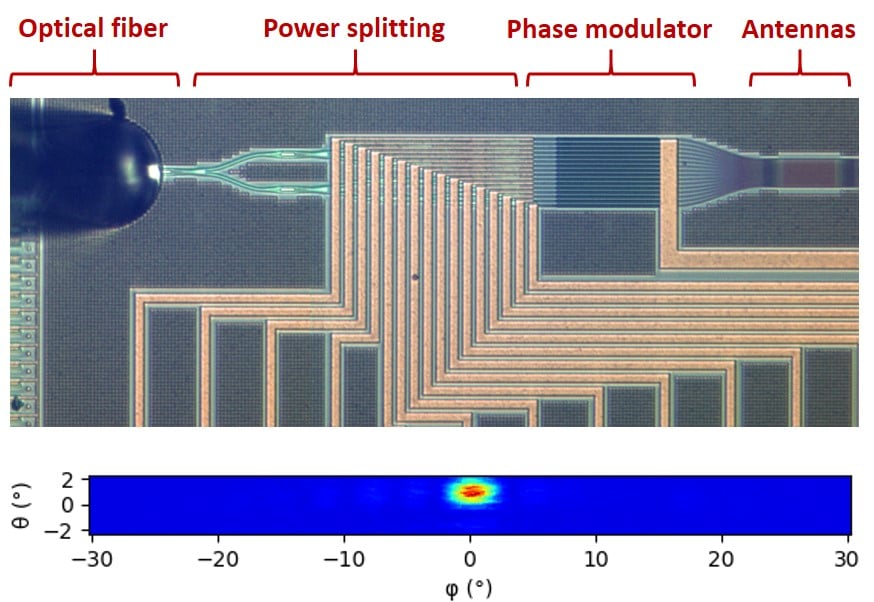CEA-Leti, a technology research institute at CEA, has developed genetic algorithms to calibrate high-channel-count optical phased arrays (OPAs), as well as an advanced measurement setup enabling wafer-scale OPA characterization. According to CEA-Leti, the genetic algorithms provide an essential step forward in the effort to develop robust LiDAR systems for widespread commercial applications. Said applications are numerous and include everything from autonomous mobility and ADAS to medicine and robotics.
What Are OPAs & How Do They Work?
CEA-Leti described that OPAs are an emerging technology made of arrays of closely spaced (around 1µm) optical antennas that radiate coherent light in a broad angular range. The produced interference pattern can then be changed by adjusting the relative phase of the light emitted by each antenna. For example, if the phase gradient between the antennas is linear, a directional beam will be formed. By changing the slope of the linear-gradient, the direction of the beam can be controlled, which enables solid-state beam steering.
According to CEA-Leti, solid-state beam steering (achieved by phase tuning the antennas) can improve scanning speed, efficiency, and resolution while simultaneously reducing size and cost versus a mechanical beam-steering system.
CEA-Leti reported the calibration and characterization results at the Photonics West 2021 Digital Forum. The findings were included in a paper titled “Development, Calibration and Characterization of Silicon Photonics-Based Optical Phased Arrays.”
“The development of a high-performance OPA would pave the way to inexpensive LiDAR systems for autonomous vehicles, holographic displays, biomedical imaging, and many other applications,” explained Sylvain Guerber, the paper’s lead author. “But widespread adoption of LiDAR will hinge on lower system costs and smaller form factors.”

Requirements & Challenges
Commercial LiDAR systems must meet specific and often stringent criteria, especially for automotive applications. In particular, a high-power and low-divergence beam is needed to resolve a scene accurately. For example, resolving a 10cm object at 100m requires an OPA operating at a wavelength of 1µm with a circuit consisting of at least 1,000 antennas, each spaced 1µm apart.
Based on this, CEA-Leti says the development of high-channel-count OPAs is necessary for a commercial OPA-based LiDAR system. “An integrated chip-scale OPA with solid-state beam steering can be produced by leveraging the benefits of a mature silicon photonics platform,” Guerber continued. “However, this is only the first step toward a fully functional OPA because beam scanning requires a preliminary calibration.”
System Level Challenges
Due to the high number of required optical antennas, the calibration process can take a significant amount of time. In response, CEA-Leti has developed a wafer-scale OPA characterization setup, which is an essential step toward the industrialization and scaling of OPA-based LiDARs. Furthermore, the genetic algorithms (which take inspiration from Charles Darwin) are developed to quickly and reliably calibrate high-channel-count OPAs. These allow up to 1,000x faster calibration than previously used algorithms, according to CEA-Leti.
“There are still a lot of challenges, especially at the system level,” Guerber said, noting that CEA-Leti will continue to work on OPAs that function as part of a holistic system. “A LiDAR is composed of many elements: a laser, an electronic driver, an OPA steering system, a detector, and data-treatment capability. All of them must work together; the OPA is only a part of the system.”


